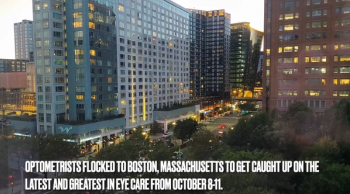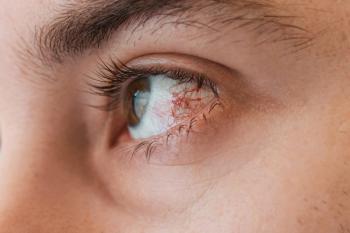
Further study needed for refractive correction and patching therapy
Visual acuity and amblyopia can be improved by refractive correction and patching in children with unilateral amblyopia.
The proper treatment for amblyopia and anisometropic amblyopia in children is as yet unknown, but researchers of several trials have tried to determine the role of refractive correction, patching, and atropine, said Dr. Owoeye, who is clinical associate and pediatric optometrist, The Wilmer Eye Institute, Johns Hopkins School of Medicine, Baltimore.
"Amblyopia can be treated in children ages 7 to 12. Patching can be an appropriate treatment for amblyopia in children 13 to 17, especially if the amblyopia has never been treated," said Dr. Owoeye. "In addition, visual acuity can improve with spectacles alone, and you may not need to patch at all in some cases. If visual acuity improves with spectacles first, amblyopia treatment may be tolerated better, if needed."
The Amblyopia Treatment Study (ATS) 2a trial was a randomized, controlled trial comparing full-time patching during all hours or all but 1 hour per day to 6 hours of patching per day for children younger than 7 years (n=175) with severe amblyopia (20/100 to 20/400). In addition to patching, all children had at least 1 hour of near-visual activities while patched.
In both groups, visual acuity in the amblyopic eye improved similarly. Average line improvement in this eye, from baseline, was 4.7 lines in the full-time patching group, and 4.8 lines in the 6-hour patching group.
"Six hours of daily patching and full-time patching produce similar improvements in visual acuity in treating severe amblyopia in children 3 to less than 7 years of age," Dr. Owoeye said. "Children may have better compliance to treatment with shorter patching times," she added.
Improvements in visual acuity
Two hours of daily patching and 6 hours of daily patching produce a similar magnitude of visual acuity improvement, when combined with 1 hour of near-visual activities in treating moderate amblyopia in children 3 to 7 years old, continued Dr. Owoeye. These results were based on the ATS 2b trial, in which researchers compared 2 hours of daily patching with 6 hours of daily patching in children younger than 7 years with moderate amblyopia (20/40 to 20/80).
The primary outcome in this trial, which lasted for 4 months, was visual acuity in the amblyopic eye.
In both groups again, visual acuity in the amblyopic eye improved similarly, with an average improvement from baseline of 2.40 lines. At 4 months, ≥20/32 or a ≥3-line improvement were seen in 62% of each group.
Newsletter
Want more insights like this? Subscribe to Optometry Times and get clinical pearls and practice tips delivered straight to your inbox.



















































.png)


